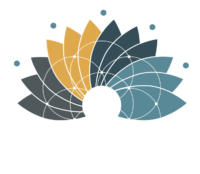 Today’s blog is the second in the Everyday Spirituality series where I’m highlighting skills and practices you can weave into your life on a daily basis to welcome greater joy, peace and harmony while at the same time building your available life force energy for full health and well-being. In this episode, I’ll cover the many forms of meditation that can fit into any schedule, that align with various interests and become a valuable tool in your life. Whether you meditate regularly or have never done it, this episode will give you ideas and practical skills to customize your practice.
Today’s blog is the second in the Everyday Spirituality series where I’m highlighting skills and practices you can weave into your life on a daily basis to welcome greater joy, peace and harmony while at the same time building your available life force energy for full health and well-being. In this episode, I’ll cover the many forms of meditation that can fit into any schedule, that align with various interests and become a valuable tool in your life. Whether you meditate regularly or have never done it, this episode will give you ideas and practical skills to customize your practice.
Key Topics include:
- Simple and easy forms of meditation you can incorporate into any lifestyle or schedule.
- The science behind how meditation can have a positive effect on our health.
- Health conditions that meditation can help alleviate.
- The benefits of a regular meditation practice.
- Experience a 10-second meditation practice using the breath.
- Meditation ideas and skills to bring into your daily life to access the spiritual energies needed to support full health and well-being.
Meditation comes in many forms from sitting in silence, chanting, guided sessions, mindfulness, yoga, and conscious movement. It has been practised for thousands of years in places like India and the Far East. It became popular with Western “seekers” and artists in the 19th century but didn’t take hold as a popularized practice until the mid-20th century. The traditional form of meditation was meant to help deepen understanding of the sacred and mystical forces of life and is still used today in spiritual circles for that purpose.
It is now considered by the traditional medical system as a complementary approach to healthcare. For example, the Mayo Clinic, a leading academic medical center in the US focused on integrative health care, education and research cites that meditation can have a positive effect on reducing stress, depression, anxiety, negative thinking, lowering blood pressure, reducing pain, inflammatory conditions, chronic pain, sleep problems, headaches, asthma and cancer by helping people manage the symptoms associated with these conditions.
The reason meditation has such a positive effect on these conditions is simple. Because it is a spiritual practice that connects us to our breath, cultures presence in the moment and activates the flow of pure life force energies throughout our bodies. When we can access greater life force energy illness, stress and overwhelm are replaced with peace, relaxation, focus creativity and wellness.
Most people think of meditation as sitting like a Buddha, cross-legged, straight-backed, and eyes closed for long periods of time. While this is one form of meditation, and has its place in ceremony, on meditation retreats or for advanced meditators it may not be the best one to try if you are new to meditating or have a busy lifestyle where finding a quiet place to sit for an hour may not be possible.
One of the great things about meditation is that it can be done anywhere, anytime without cost or the need for equipment. It is free and all you need is yourself, how easy is that? It is one of the best life hacks out there – quick, easy and always accessible!
Even said, I find some people are resistant to meditation practices which I find interesting. I often wonder if this is out of fear of being still because it is viewed as unproductive or perhaps people are afraid of what will come up for them if they take the time to be still and quiet within themselves. While this may be true for some, I think the majority of these thinkers simply haven’t had exposure to the different forms meditation can come in and do not have to be associated with crystal-y jingly hippy stereotypes.
Mindfulness meditation is one of these practices that has broken free of this ridiculous stereotype as it has found its way into corporate boardrooms, medical systems and educational institutions. It is one of the everyday spiritual practices you can do when you’re out for a walk, at work, standing in line at the store or even at home washing the dishes. It can also be done as a dedicated practice led by a mindfulness facilitator in workshop, retreat and 1:1 formats. An everyday mindfulness practice is simply about staying fully present in the moment and connected fully to all your senses.
Take 10 seconds here to practice it with me. Begin by focusing on your breath as you breathe normally. Begin to notice the sensations in your body—the contact points of where you are sitting or standing. Take a breath here. Notice what you are seeing around you. Name 3 things you see. Come back to the breath. Name three sounds you hear. Come back to the breath. Name any smells you pick up. Come back to the breath. Do a body scan from head to toe to notice sensations in your body. Come back to the breath. Repeat this exercise as many times as you would like or while doing chores, errands or in a meeting. 10 -30 seconds is all you need, but you can extend this to as long as you’d like. For example, if you are out on a walk or hike for the day you can still your mind and connect in meditation by observing and naming the colours you see or the vegetation or other natural elements. Keep it simple and follow the rhythm of your breathing as you do this. For example: inhale and on the exhale look at the sky and say ‘blue’ in your mind’s eye or out loud. Inhale and exhale and look in front of you and say ‘tree’. And so on. Practice this for 10 – 20 minutes and notice how you feel afterwards.
This is also a form of what I call active meditation. Where instead of sitting still in silence we incorporate movement into a meditative practice that focuses on the breath and the rhythm of your body’s movement. It can help to count steps or swimming strokes, which is my personal favourite, to focus the mind on counting. You can also repeat a mantra as you move in rhythm with your breath and body. This is one I practice regularly while swimming both in the open water and pool. I settle into the rhythm of breathing every third stroke being aware of the rhythm of my arms and legs moving in synch with my breath. I clear my mind as I repeat the number of the lap I am on if in the pool or sometimes count my strokes in the open water. Once I feel my body begin to relax, I let go of the mental activity of counting and focus solely on the sensations of the rhythms of my breath and synchronised body movement. If a thought enters or you lose focus, that’s ok, try not to create more thinking around that or let it disturb your meditation. Just find your way back to the rhythm of movement through your breath.
Mantra is another lovely way to bring a meditative practice into your daily life. These can be said in your mind’s eye or out loud depending you where you are. Mantra practices are a nice way to activate the voice or bring focus and calm to the mind. It’s like giving the monkey mind a banana to focus on rather than running around in your head. Mantras in Sanskrit are nice to use as they have thousands of years of energetic presence behind them you can tap into when practising them. Sanskrit mantras as like yoga for the mouth as each letter in Sanskrit requires a specific positioning of the air, tongue and vibration that activates the mantra’s energy within the body. If you already practice mantra but have not learned how to pronounce the syllables correctly I highly recommend taking a Sanskrit pronunciation course as it allows the energy of the mantra to connect with your body as an instrument of the divine. If you are new to mantras, you can access the positive effects by repeating them and noticing the vibrations within your body as you do. Mantras can be spoken or sung as you prefer. A few simple ones you can use are:
Lokah Samastah Sukhino Bhavantu which translates to: may all beings everywhere be happy and free.
Om Gam Ganapati Namaha : Calls in the divine energies of Ganesha, the remover of obstacles and ruler of new beginnings.
On shanti shanti shanti : Sends our offering of peace to the world and yourself.
Om Namah Shivaya which honors the universe within you and around you.
The power of mantra is one to explore, especially if you like to sing or wish to release disturbances from your throat chakra so you can speak your truth from the heart.
If chanting isn’t your thing, another simple meditative practice from a silent perspective, that is a great way to help sleep is a long and mindful inhale and exhale practice. You can do this before bed lying down or in a seated position. It can also be incorporated into a gentle yoga practice such as the trio dosha ayurvedic traditional yoga practice I offer on my retreats for example. This involves taking an Inhale of a count of 7 and exhaling on a count of 7 and repeating for as long as feels comfortable. The 7 count is the minimum so if you can inhale longer, you may just make sure you inhale and exhale on the same number of counts to get the full effect.
I personally meditate several times a day, in each of these different forms and have been for decades. Start in a small and accessible way so that you enjoy the practice. Pay attention to how you feel before and after you practice as well as over time for example reflecting on how you feel after doing a daily practice for one week. Remember, it takes 21 days to make a new habit, so if it feels difficult at first stay with it for 21 days as it will become easier. As you habituate the practice your body chemistry will adjust to hold peace, relaxation and calm more easily throughout your day in between meditation practices.
I hope this article has given you some ideas and skills to be able to bring meditative practice into your daily life to access the spiritual energies needed to support full health and well-being.
You can also listen to this meditation on the companion Healing Codes Podcast episode with the link below.
Want to learn how to practice Consciousness Medicine and Family Constellations? My next training course begins in April 2024. More information here: https://consciousness-medicine.com/product/family-constellation-consciounsess-medicine-foundations-course/
_____________
Find out more about Consciousness Medicine.
Upcoming courses, workshops and 1:1 sessions.
Sign up for my free e-newsletter from the homepage www.consciousness-medicine.com.
Stay Connected on Social Media:
Facebook: www.facebook.com/CentreforConsciousnessMedicine
Instagram: www.instagram.com/wellnesswisdomwithjulie
Linked In: www.linkedin.com/in/julie-williams-cxmed


